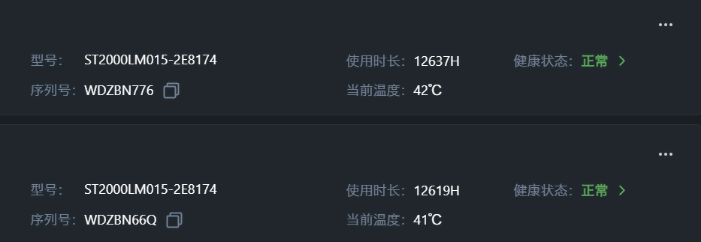August Notes: Folo RSS Migration, Medical Insurance Drug Prices, Broken Oil Filter, Feiniu Not Displaying HDD Temperature

This is Old T’s notes from August, compiled and published here. It mainly covers issues encountered after Folo RSS changed domains, problems with medical insurance medications, a damaged car oil filter, and some issues while using Feiniu and Synology.
Template Setup Issues for Publishing Blog Notes via GitHub Issues
When setting up the template, pay attention to the following issues:
- Page Build Cache. This may prevent page content from updating.
1 {{ $url := "https://api.github.com/repos/user/moments/issues/1/comments" }}
2 {{ $opts := dict
3 "headers" (dict "User-Agent" "Hugo Static Site Generator")
4 "cache" 300
5 "cacheKey" (printf "gh-comments-%s" (now.Format "2006-01-02-15:04"))
6 }}- Content Sorting. The GitHub Issues API outputs data with the newest content last, so it needs to be reversed.
1 {{ with resources.GetRemote $url $opts }}
2 {{ if and .Content (ne .Content "") }}
3 {{ $comments := .Content | transform.Unmarshal (dict "format" "json") }}
4 {{ $sortedComments := sort $comments "created_at" "desc" }}- Time Format. GitHub Issues uses UTC time by default. For China, add 8 hours to the base time.
1<time>
2 {{ (.created_at | time.AsTime).Add 28800e9 | time.Format "2006-01-02 15:04" }}
3</time>Several Issues While Using Folo
Recently encountered a few problems while using Folo:
RSSHub Source Failure Issue
Among my Chinese blog list, 28 RSS sources have failed, accounting for about 20%. However, these are personal sites, so it’s somewhat normal. Sometimes changing domains or platforms makes the original RSS links untraceable. But for RSSHub, when RSS sources for major platforms like Zhihu fail, it’s unacceptable. The output results are all 403 errors, likely because Zhihu has blocked RSSHub.
Error Message:
FetchError: [GET] "https://www.zhihu.com/people/rpwi/": 403 Forbidden
Route: /zhihu/posts/:usertype/:id
Full Route: /zhihu/posts/people/rpwi
RSS Source Icon Cache Issue
The RSS source for my blog was added in the latter half of last year. I was changing domains at the time and temporarily used a favicon, switching to a new, official one within a few days. Unexpectedly, Folo still uses the favicon from when it was first added.
Folo uses the image caching service from webp.se. After fetching the website icon, it automatically adds a fallback parameter ?fallback=true. According to the webp.se documentation, they update their cache once daily. However, Folo seems to have permanently cached the icon, and I couldn’t find where to refresh it. I tried using common parameters on the link to refresh, but it was ineffective. In fact, webp.se fetches my blog’s icon without any issues.
Folo icon address: https://unavatar.webp.se/lawtee.com?fallback=true
Normal icon address: https://unavatar.webp.se/lawtee.com
This issue was eventually resolved after some折腾, but I’m not sure which specific action triggered the successful refresh.
RSS Source Migration Issue
After changing my blog domain from hyruo.com to lawtee.com last year, I set up a 301 redirect for the original RSS link.
https://hyruo.com/index.xml --> https://lawtee.com/index.xml
I see that Folo can recognize this kind of migration.
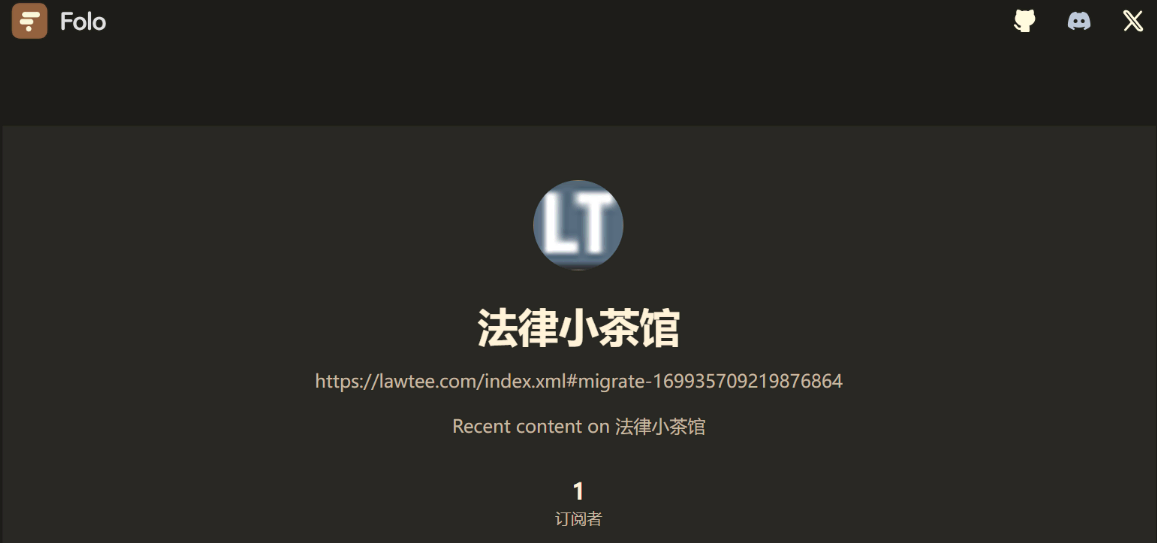
However, the problem is that every time the RSS source is reset, it fails again after a few minutes. The link address reverts from lawtee.com back to hyruo.com.
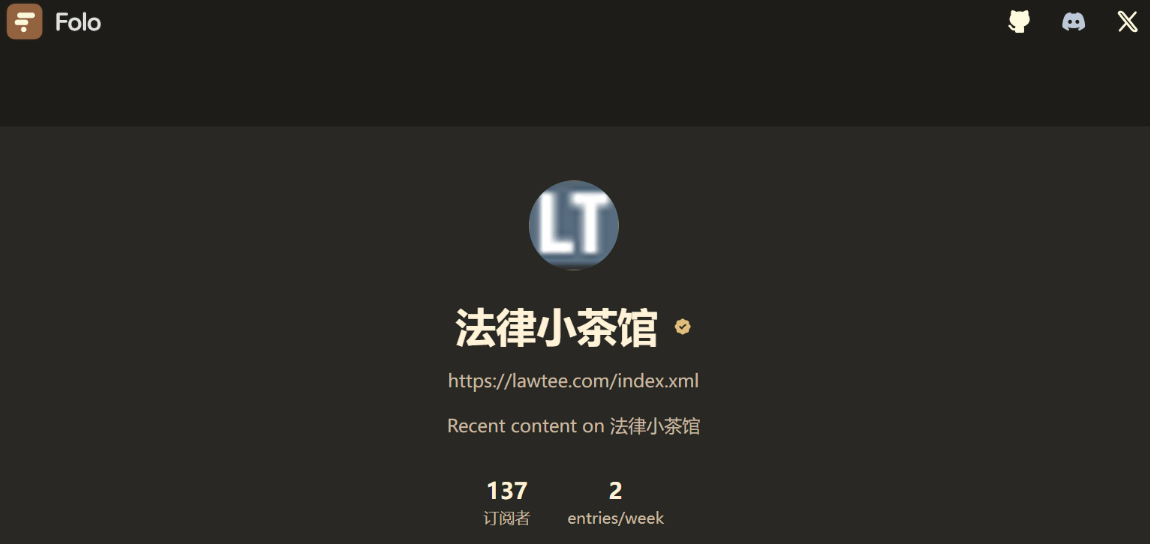
Folo RSS page address: Lawtee’s Teahouse
This issue primarily exists because Folo automatically appends machine verification parameters to the RSS URL. During migration, it automatically sets a migration identifier for the new RSS source. It only succeeds if accessing a link like https://hyruo.com/index.xml#migrate-102195283873064960 correctly redirects to the new RSS source. (However, Folo consistently has issues here, often bouncing back and forth between the two URLs. I’m not sure if it can ever be permanently successful.)
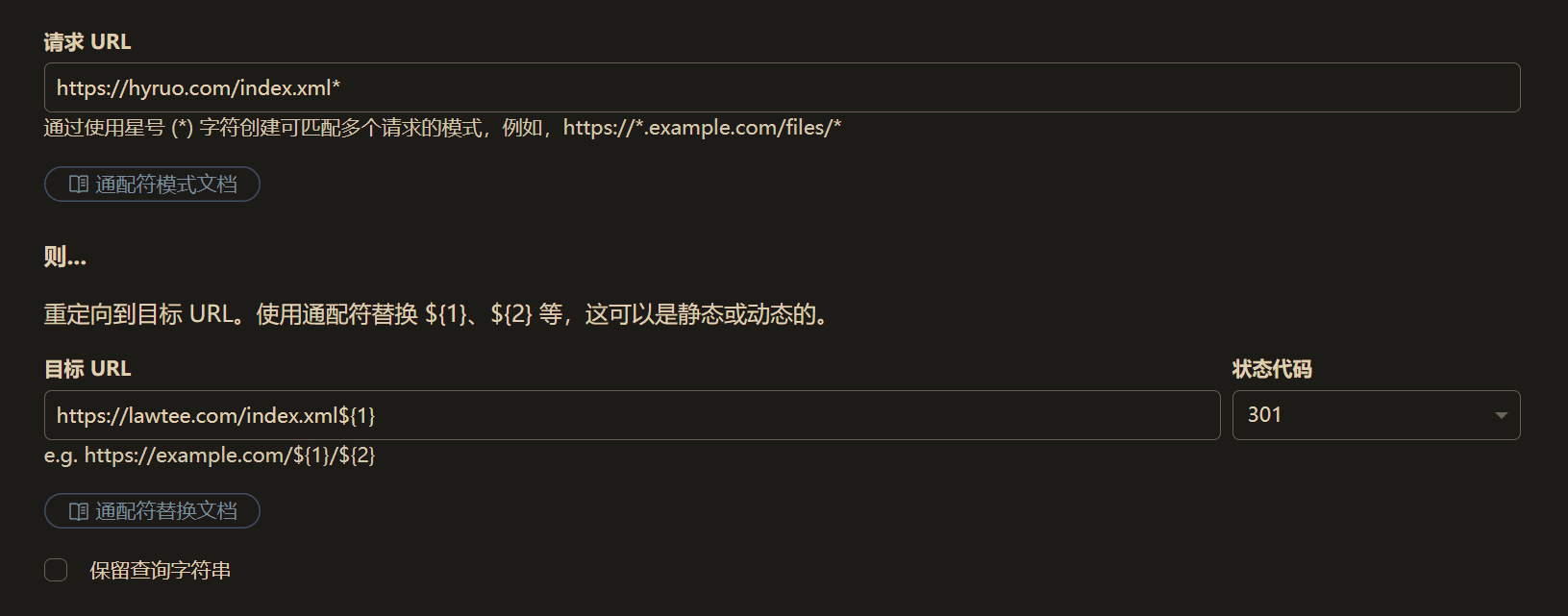
Replacing with a Xiaomi 14 Phone
A couple of days ago, my wife told me her phone suddenly started lagging. WeChat frequently couldn’t download images, couldn’t open Office files, couldn’t play videos sent by others, sending pictures often failed, and videos within WeChat Channels couldn’t be played. Restarting the phone helped temporarily, but the issues returned quickly. I cleared the phone storage and WeChat cache for her, but the problems always resurfaced shortly after.
I know the main reason is the excessive amount of data stored in her WeChat. Currently, two WeChat accounts on her phone take up 500GB of storage. But she舍不得 deletes anything, with tens of thousands of contacts and thousands of group chats – it’s really tough on the phone.
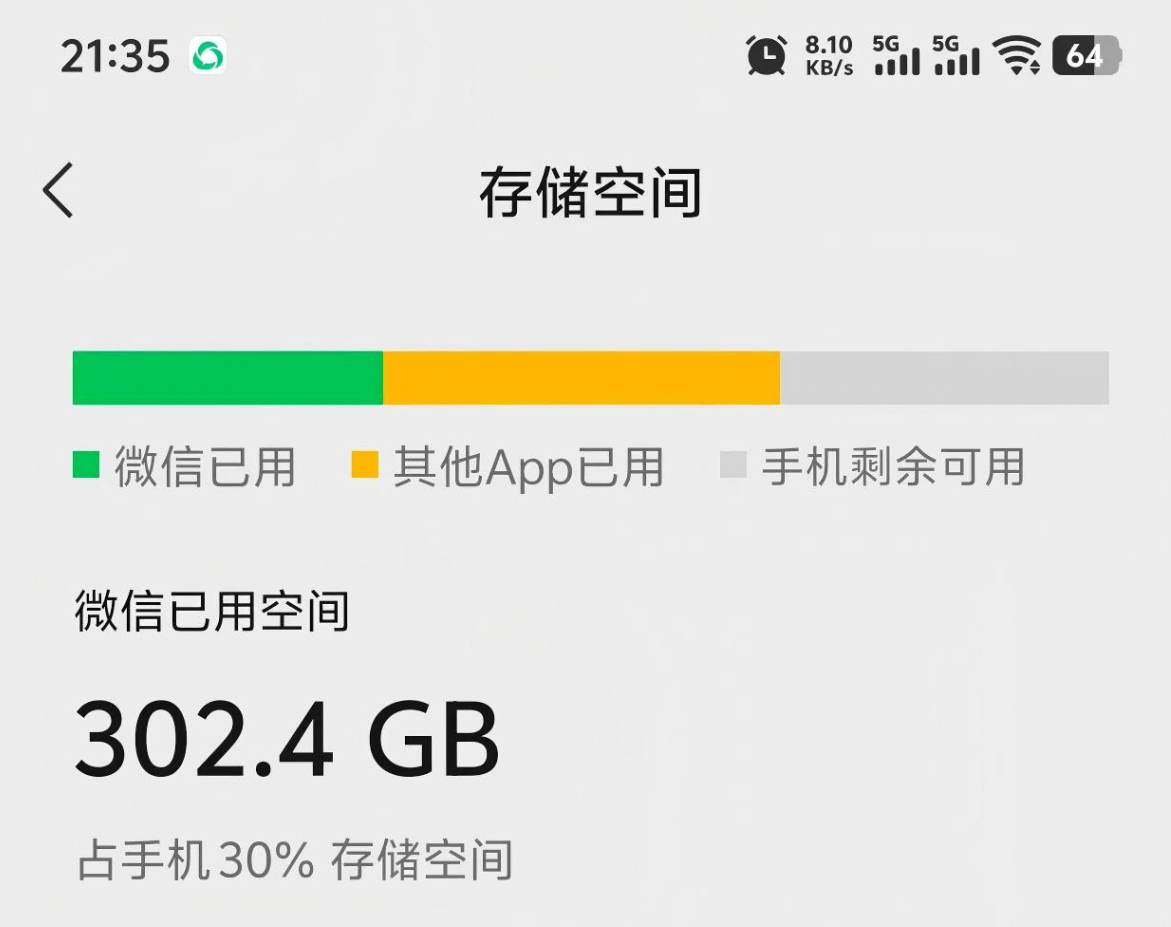
She was using a Vivo X100 Pro 1TB phone. Given her refusal to delete WeChat history and the hassle of resetting the phone, I had to buy her a new Xiaomi 14. Since it’s an older model, the price was quite good – over 2700 RMB for the 1TB version. It should be enough for her to use WeChat without lag for another year. If problems occur later, we’ll just have to麻烦点 and migrate back to Vivo.

VIVO Phone App Migration Snafu
Last night, there was a snafu while migrating from the vivo X80 to the vivo X100 Pro. During the first migration attempt, phone settings and built-in apps transferred successfully, WeChat and QQ migrated normally, but a large number of other applications (APPs) failed to transfer.
Previously, when migrating from the vivo X100 to the Xiaomi 14, this issue wasn’t encountered. I wondered if it was because many of my apps were installed via Google Play. Previously, all apps on the vivo X100 were installed using the Vivo App Store.
I then downloaded a third-party phone app migration tool and折腾ed for over half an hour, only to find that this migration couldn’t sync the app data either – it only transferred the apps themselves.
This was alarming because I have over 100 apps, many downloaded from Google Play or GitHub. Many lack account sync functionality. Starting over from scratch would be a massive undertaking.
I researched the Vivo One-Click Phone Clone feature more thoroughly and finally discovered the problem: I had previously restricted the “One-Click Phone Clone” app’s permission to read the app list, to prevent various apps from胡乱 accessing it. Unfortunately, during the migration process, Vivo didn’t prompt about missing app permissions. In contrast, I recall that during the migration to the Xiaomi 14, the app prompted me to enable various permissions one by one.
After identifying the issue, I restarted the One-Click Phone Clone process and found that all APPs and their data migrated normally, including Google Play itself. No usage issues have been found so far.
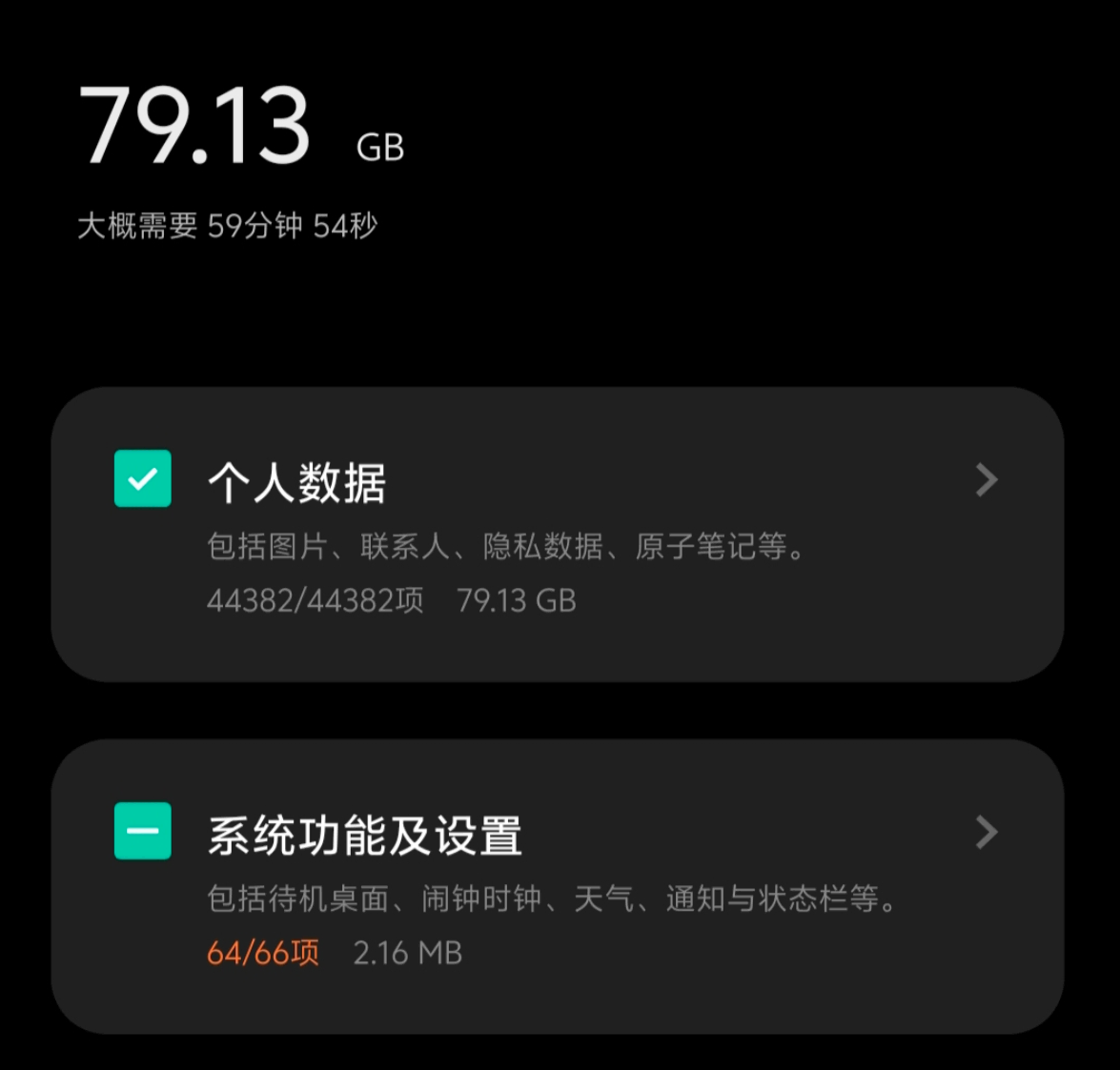
Are Medical Insurance Medications a Trap?
After the centralized procurement of medicines by medical insurance, I always thought hospital drugs were very cheap. Previously, my mom would get her chronic disease medication from the hospital every two or three months, costing only ten or twenty RMB. But during a check-up today, I仔细 looked at the several medications the doctor prescribed and found each was quite expensive.
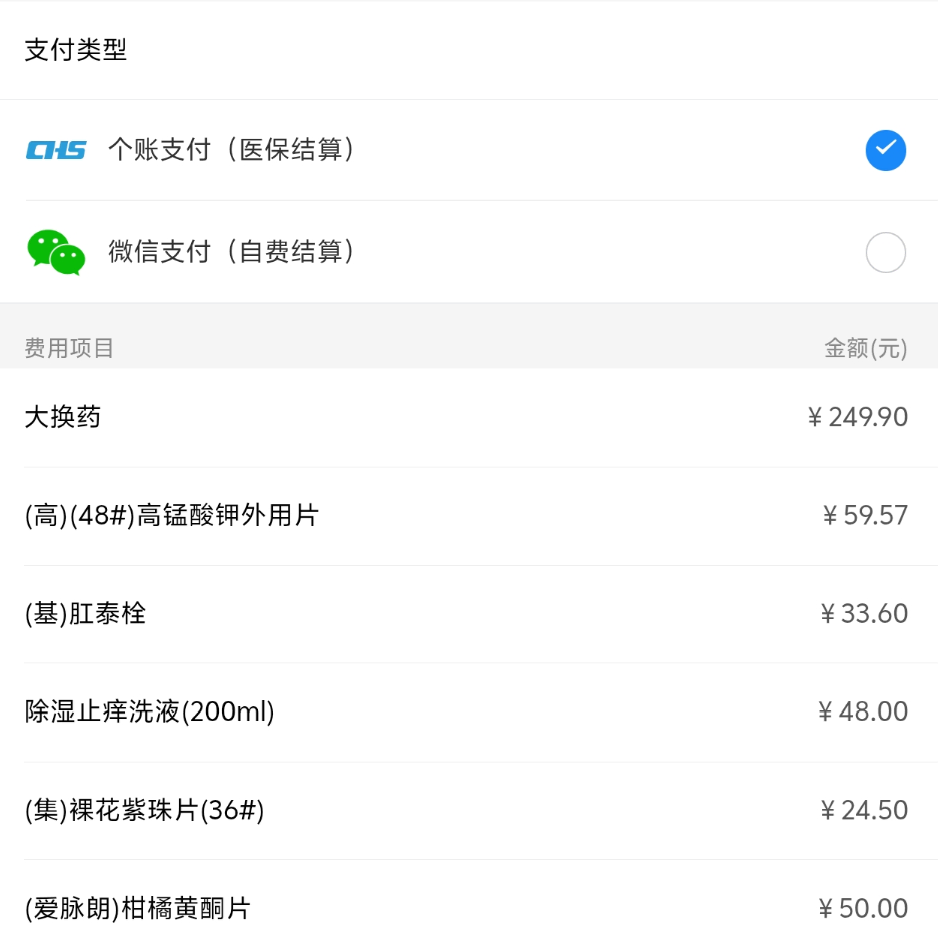
The first one that stood out was the Potassium Permanganate tablets. I previously bought a box on JD.com for 5 RMB.
But the hospital version, with the same quantity, actually costs 60 RMB. I checked the same Potassium Permanganate external use tablets on JD.com, and indeed they also sell for 60 RMB.
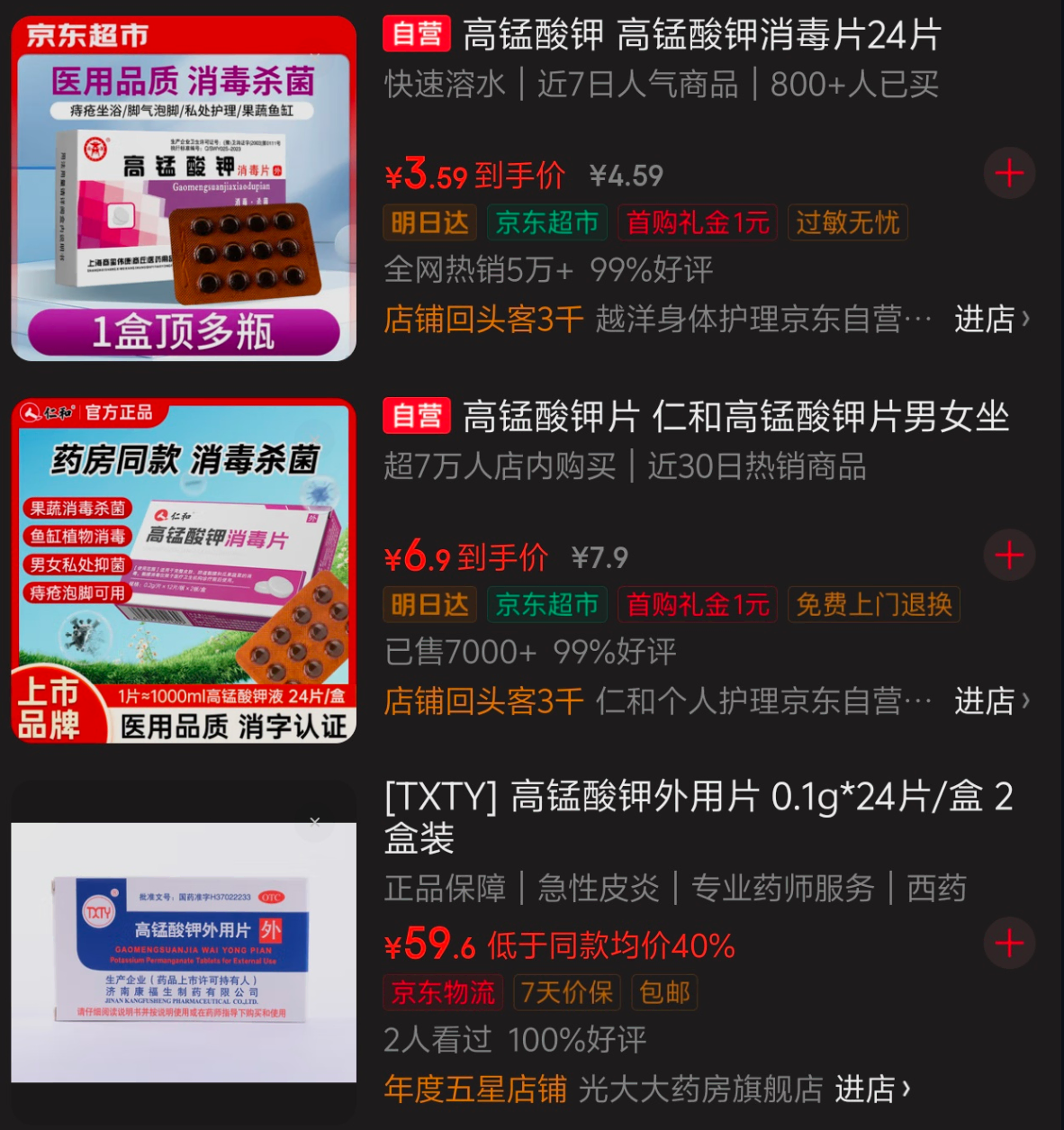
Then I仔细 looked at the difference. The 5 RMB Potassium Permanganate tablets bought on JD.com only have an enterprise standard, not even a “Disinfection Product Approval Number,” while the hospital’s identical-looking version is OTC (Over-The-Counter).
I searched further and found that currently there are only two OTC Potassium Permanganate external medications in China. One is the “TXTY” brand from Jinan Kangfusheng shown above, and the other is produced by Shandong Mingren Furuida Pharmaceutical Co., Ltd. However, currently only the “TXTY” brand seems to be available for sale; for the Furuida one, I couldn’t even find a picture of the medicine box online.
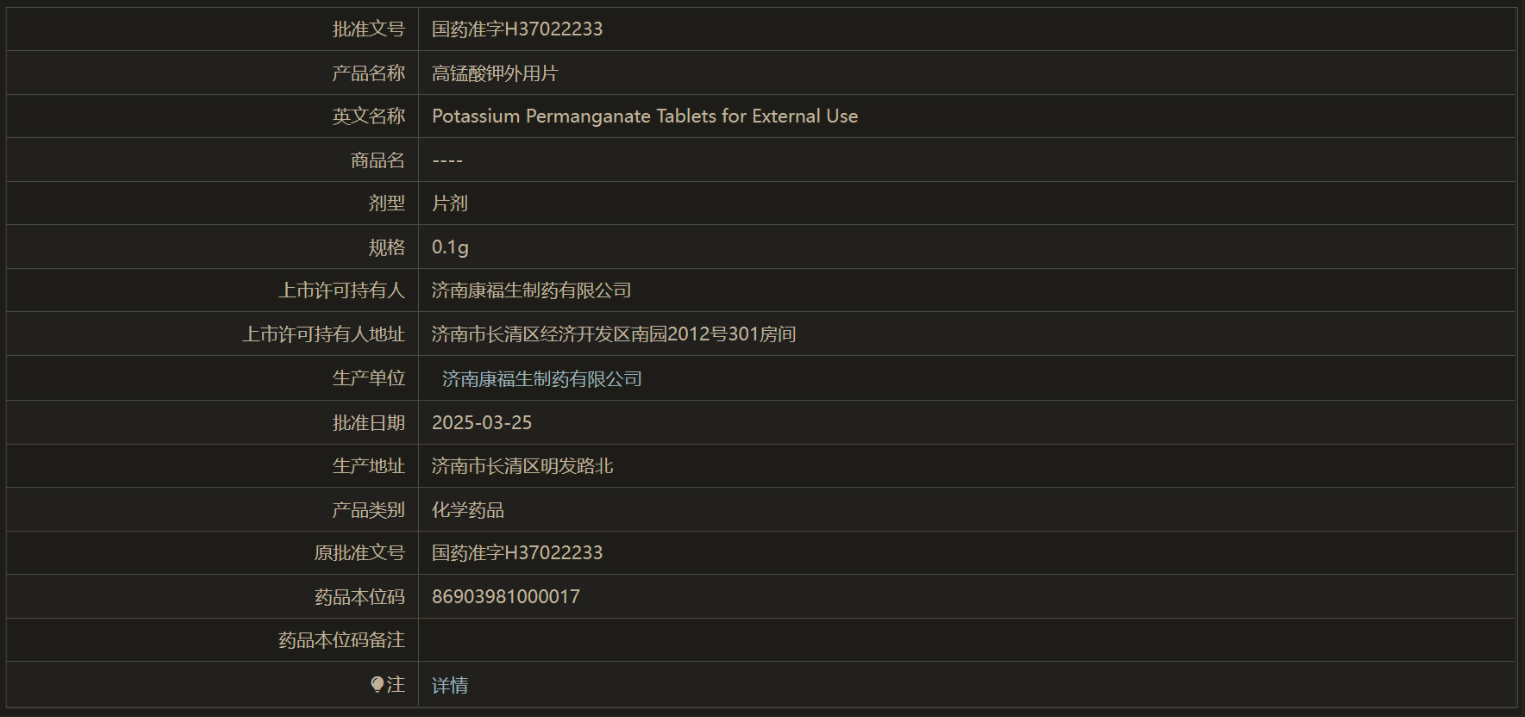
This means the “TXTY” brand Potassium Permanganate external tablets are practically a monopoly. No wonder they’re sold at such a high price.
First Zhihu Answer Surpasses 8000 Upvotes
A few days ago, I saw a topic on Zhihu about an incident in Ning County, Qingyang City, Gansu Province, where a parent was detained after posting a video questioning school uniform issues. After reading hundreds of answers that mostly seemed to hastily output emotional reactions, I tried writing an answer myself, spending one evening on it. The next day, I woke up to find it had received 5000 upvotes. As of now, it has surpassed 8000 upvotes and 2000收藏. Consider it a return on emotional investment.

I’ve long known that traffic on such closed platforms significantly exceeds that of personal blogs, but their定位 are different and not really comparable. In fact, I早已 deleted all my answers on Zhihu from before 2019, mainly because public platforms often involve outputting momentary emotions, whereas the blog allows for a much more平和的心态.
One SSD Bricks in Synology
Previously, I removed two hard drives from the Synology, formatted them, and placed them in the Epson ST190E host to use as storage for the Feiniu NAS.
Seeing the empty Synology drive bays, I took a SATA SSD from an old computer and installed it, thinking I’d try Synology + SSD to see if it could boost speed a bit.
However, I didn’t find any SSD caching function in the system. Checking the Synology website revealed that my specific NAS model doesn’t support SSD caching.
If it can’t be used as cache, surely it can be used as a software volume, right? So I formatted the drive into a Basic volume and installed several commonly used software on it.
It wasn’t until August 12th that I opened the Synology panel and discovered this drive, which hadn’t been installed for long, had completely failed.
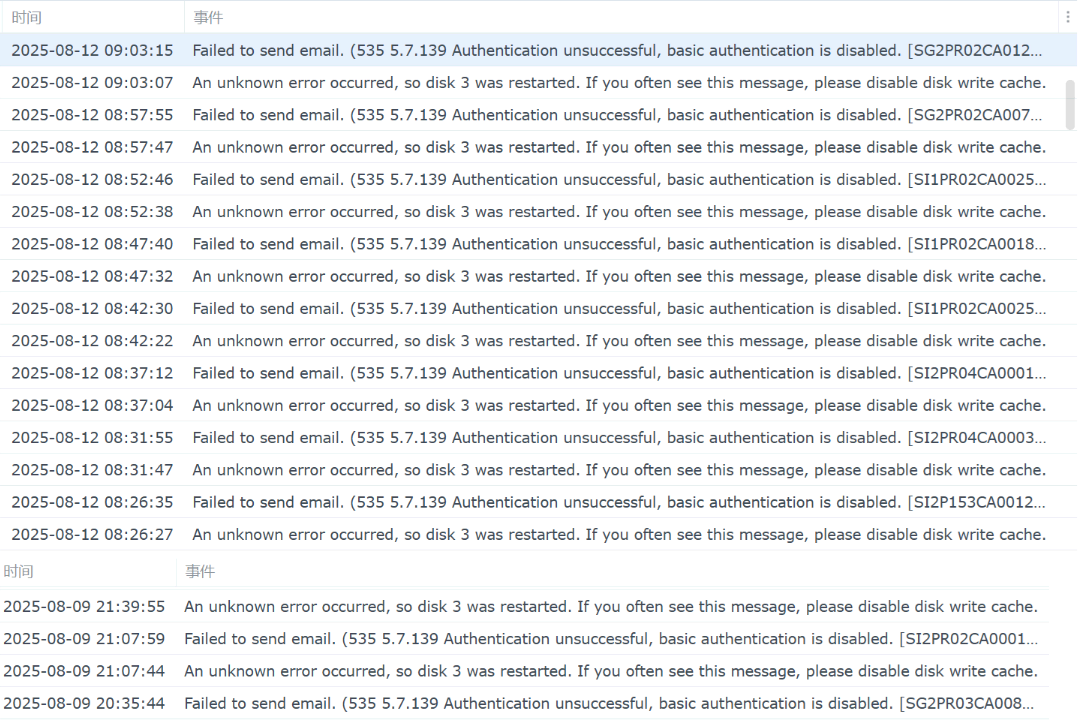
From the evening of August 8th to August 12th, the NAS had tried countless times to notify me via SMTP email, but because the SMTP configuration had expired, I obviously didn’t receive the notifications. I missed the best window for recovery. In fact, the error count was relatively low on August 8th. By August 11th, I saw it had triggered over 600 severe warnings in a single day – presumably the system疯狂 battling with the drive. By August 12th, the system could no longer read the drive at all, and the drive was彻底报废.
Expired SMTP settings are indeed troublesome. I must have set up this SMTP on the Synology four or five years ago. It probably failed because I changed the email password at some point, and one doesn’t usually remember these things. For instance, just now I checked the SMTP settings in my QQ邮箱 and found several authorization codes that were莫名其妙 – I have no idea when I set them up. Some IPs were in the US, some in Malaysia, and they had all sent emails recently, but I have no recollection of it.
Differences in Feiniu Photo AI Recognition Scheduling Strategy
The scheduling strategy for Feiniu’s AI Photo recognition is a bit hard to understand.
When I first used AI Photo recognition last week, both face recognition and smart categorization were using the GPU. Since both processes were调度 the GPU, the GPU utilization, specifically the Render usage, showed peaks and valleys, maxing out every few seconds. This caused the CPU fan to constantly cycle between 20% speed and 100% speed, while the CPU cores remained largely idle.
Due to the poor recognition results last week – especially the failure to recognize the faces of all four family members – I decided to test it again,不死心. This time, however, the AI Photo recognition scheduling strategy was明显 different. This week, the face recognition process was utilizing the CPU for computation, while the image smart categorization was utilizing the GPU. The benefit was that both the CPU and GPU were operating at a sustained, stable output. CPU utilization was around 40% across 3 cores, and overall GPU utilization was around 25%, with the Render portion稳定 above 95%.
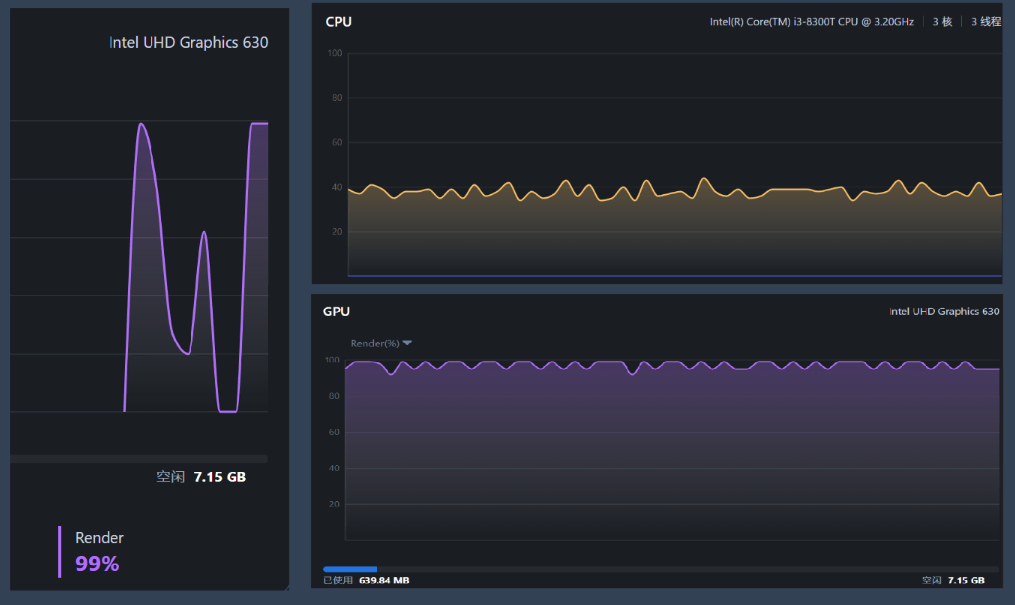
I’m relatively satisfied with this scheduling strategy. Using both CPU and GPU simultaneously, the recognition speeds for both tasks are roughly similar. Previously, when only the GPU was used, face recognition was about twice as fast as smart categorization. Now they are半斤八两, with speeds differing by only about half. However, this introduces another problem: heat dissipation. The CPU temperature is now hovering near its thermal limit, maintaining around 80 degrees Celsius.

Oil Filter Breaks Inside the Engine
Yesterday afternoon, I drove to JD Auto Care for maintenance and encountered a bizarre incident.
While changing the oil, the mechanic found that the oil filter had completely disintegrated and broken inside.
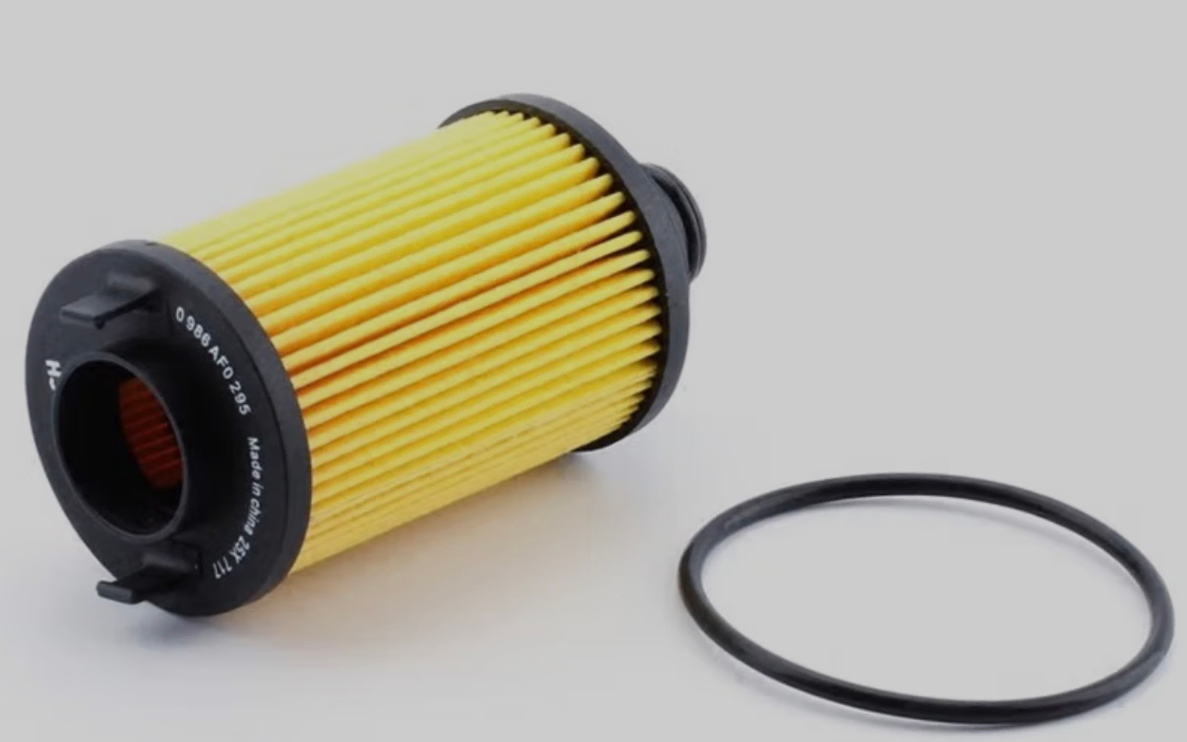
He repeatedly raised and lowered the car, reaching in from both the top engine bay and underneath the chassis to try and retrieve the pieces, but one section stubbornly remained stuck inside.
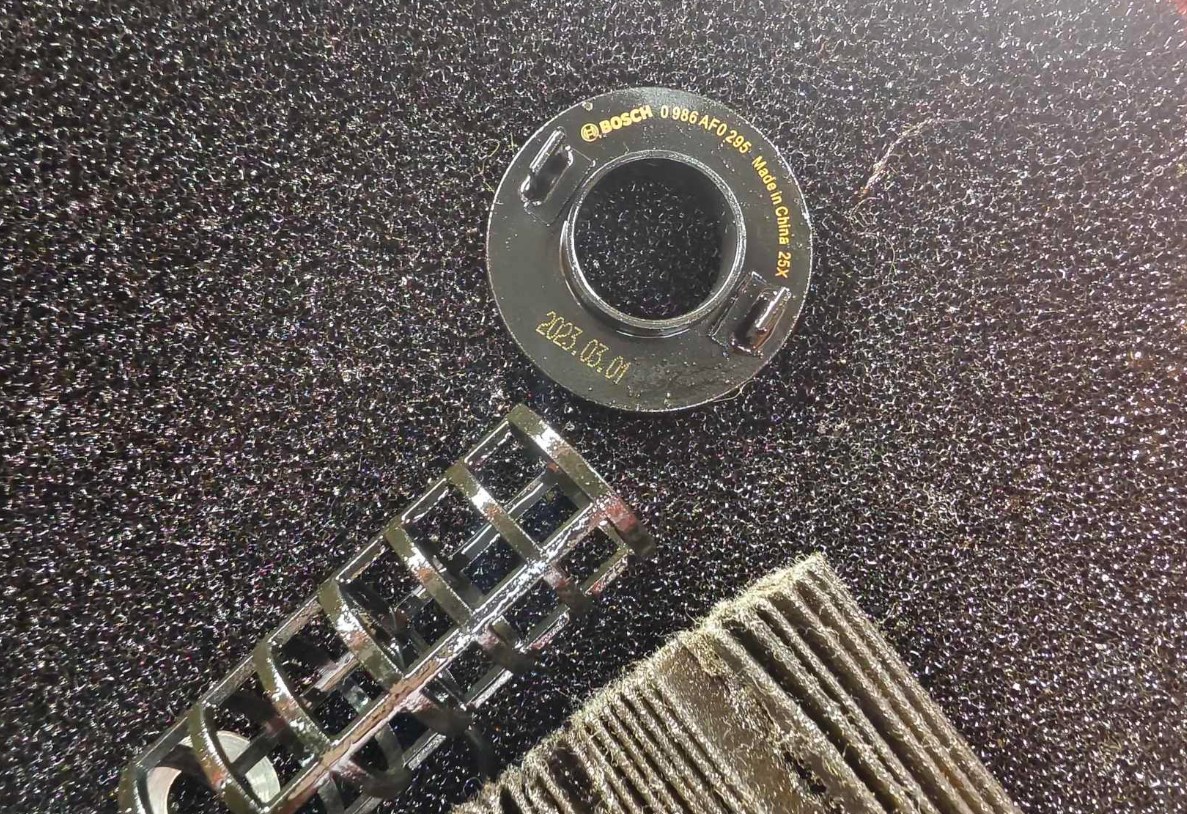
The engine design in my car is particularly奇葩; the location of the oil filter is extremely狭窄. Whether accessing it from above or below, it’s very difficult to get a good grip with fingers. After spending over half an hour, he was practically at his wit’s end.
I searched Douyin for similar cases but didn’t find any. Finally, based on the structure of the original filter, I suggested he try using a piece of wire to hook it out. After a few attempts, he finally managed to retrieve the piece.

Today, with the help of AI, I was informed that the issue was with the SATA mode I had used for direct passthrough of the hard drives, and it needed to be changed to SCSI mode.
qm set 100 -sata1 /dev/disk/by-id/ata-ST2000LM015-2E8174_WDZBN66Q #AI suggested changing sata to scsi
qm set 100 -sata2 /dev/disk/by-id/ata-ST2000LM015-2E8174_WDZBN776However, after making this change, the storage spaces in Feiniu became completely disorganized. They couldn’t be repaired or rebuilt, and I had no choice but to format and start over. At the same time, the hard drive temperature information disappeared entirely—not even the previous 1 hour and 31°C were displayed.
Later, I recalled that when setting up GPU passthrough before, I had also followed AI’s advice and used command-line settings, which never worked. It was only when I directly added the PCI device in PVE that it succeeded. So, I wondered if I could try the same approach this time. As it turned out, this attempt solved both issues at once.
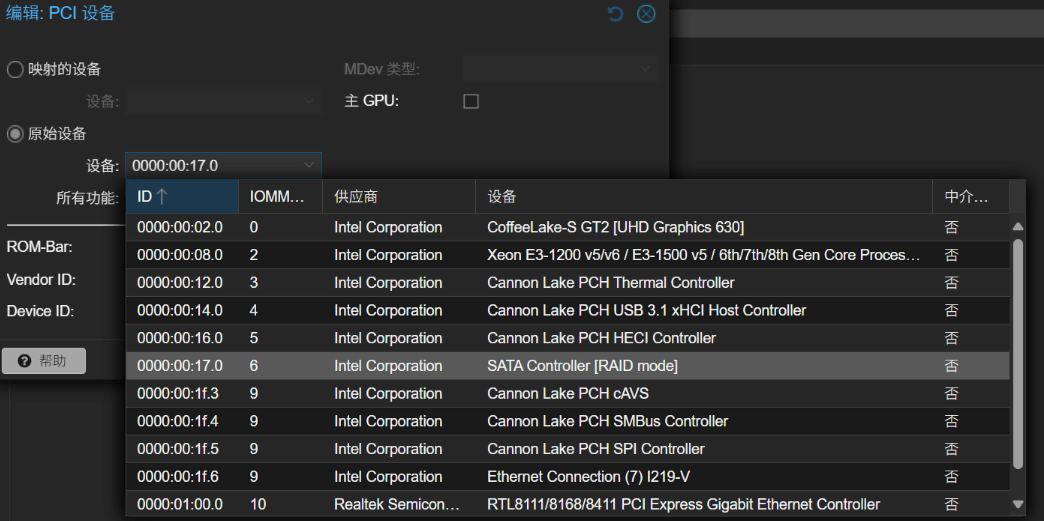
After adding the SATA controller to the virtual machine, the storage spaces in Feiniu returned to normal, and the previous data was not lost. The SMART information of the hard drives could now be accurately read, and there was no need to add the hard drives manually.
